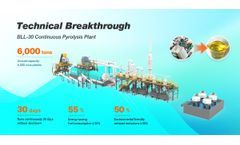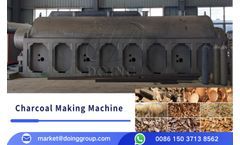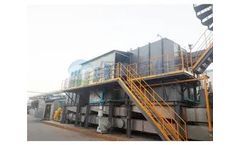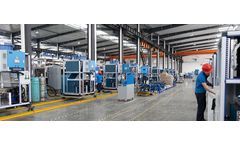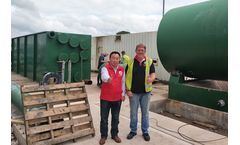Refine by
Waste Gas Articles & Analysis
82 articles found
Below are the three key technological breakthroughs that set this equipment apart: 1. Efficient Oil-Gas Condensation and Anti-Polymerization Technology This technology uses a direct spray mixing method to quickly reduce the oil and gas temperatures, improving the condensation efficiency. ...
During the drying process, the temperature and gas are properly controlled to ensure that the organic matter in the material can be fully pyrolyzed. Avoid generating too much waste gas. 2. Pyrolysis and carbonization: the material is reheated to the pyrolysis temperature in the carbonization furnace. ...
Utilizing these waste materials not only reduces production costs but also contributes to waste management and environmental conservation efforts. ...
Regenerative Thermal Oxidizer (RTO) uses the ceramic regenerators to store the heat generated by the decomposition of VOCs, and uses the thermal energy stored in the ceramic regenerator to pre-heat and decompose the untreated VOCs, thereby achieving high thermal efficiency. The oxidation temperature is generally between 800 ° C and 850 ° C, up to 1100 ° C. Regenerative Thermal ...
The company leaders, in line with the principle of creating a good production and living environment for the employees and the surrounding residents, collect and deal with the waste gas generated in the operation process and completely eliminate the hidden dangers of the enterprise's development. ...
Regenerative Thermal Oxidizer (RTO) uses the ceramic regenerators to store the heat generated by the decomposition of VOCs, and uses the thermal energy stored in the ceramic regenerator to pre-heat and decompose the untreated VOCs, thereby achieving high thermal efficiency. The oxidation temperature is generally between 800 ° C and 850 ° C, up to 1100 ° C. Regenerative Thermal ...
Entrusted by the company, shandong baolan environmental protection engineering co., ltd. for its preparation of the preliminary design scheme of dust removal and desulfurization treatment. In line with the design principle of mature and reliable technology, reasonable overall layout, convenient operation and management, and low processing cost, we compiled the ...
During the drying process, the temperature and gas are properly controlled to ensure that the organic matter in the material can be fully pyrolyzed. Avoid generating too much waste gas. 2. Carbonization: the material is reheated to the pyrolysis temperature in the carbonization furnace. ...
Generally speaking, these fully-automated pyrolysis plants can certainly assist plastic, waste tires, oil sludge, and medical waste. The Technical Advantages Of A Continuous Pyrolysis Plant - An Easy Task To Manage Electrical Control System These control systems typically come with pressure gauges, thermometers, and emergency stop devices. ...
Combined cycle gas turbines (CCGTs) play a critical role in providing power grids with additional electricity, supporting reliability and resilience during periods of high demand. ...
Did you know there's a lucrative way to manage the vast amount of wood waste generated by the manufacturing and construction industries every year? ...
Beston charcoal manufacturing plant available for sale price A Beston charcoal manufacturing plant available for sale is perfect for processing all types of biomass wastes including wood, sludge, and natural gas. Its versatility allows it to use different fuels and biomass, for example, wood, sawdust, bamboo, and coconut shells. Beston charcoal making equipment ...
A continuous pyrolysis plant is a kind of waste management facility that can convert organic waste materials into combustible gas as well as other useful products. ...
The Gasifier The gasifier is utilized to generate methane, that is a major component of natural gas. The gasifier operates by wearing down the biomass into smaller molecules. ...
A continuous pyrolysis plant is a kind of waste management facility that will be able to convert organic waste matter into combustible gas and also other useful products. ...
Waste to energy (WTE) plants convert solid waste into electricity and/or heat. ...
Direct drying means that the wet sludge is in direct contact with the high temperature gas, the high temperature gas provides the heat required for the evaporation of the water in the sludge, and then the evaporated gas is taken away by the high temperature gas for further processing. ...
A wide variety of fuel options are offered to you, and you could even fuel the reactor with the pyrolysis oil and hydrocarbon gas that you simply net in the pyrolysis process.The reactor produces an oil gas through the waste, and so the oil gas is then transformed into pyrolysis oil. ...
Direct drying means that the wet sludge is in direct contact with the high temperature gas, the high temperature gas provides the heat required for the evaporation of the water in the sludge, and then the evaporated gas is taken away by the high temperature gas for further processing. ...
Typically, these dedusting systems occur over 3 steps to make sure that waste discharged smoke matches as much as the necessary emission requirements. ...

